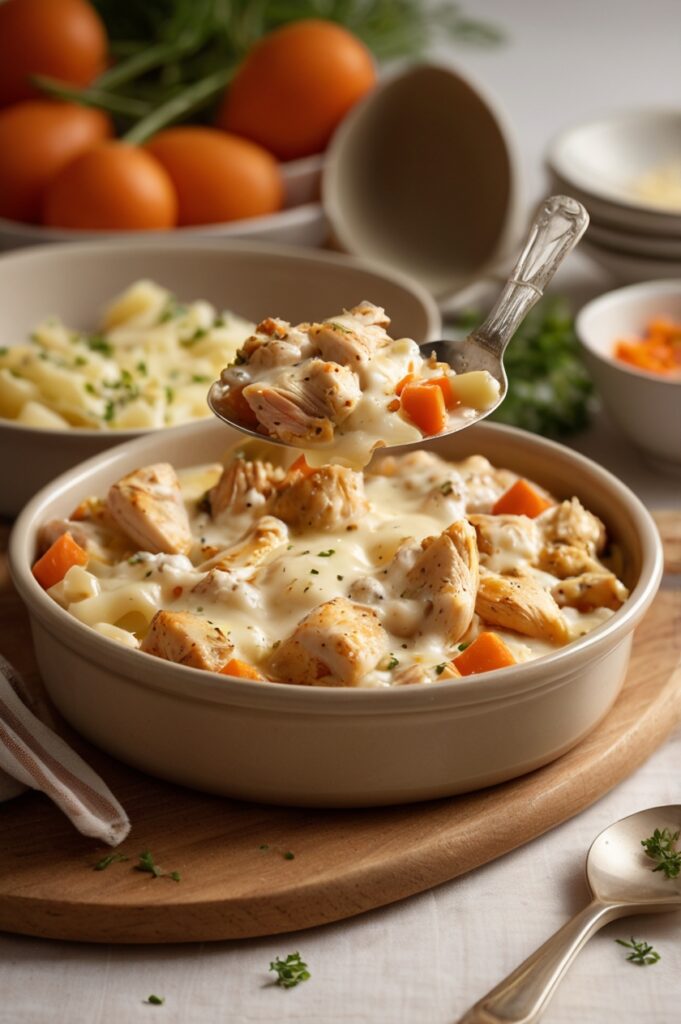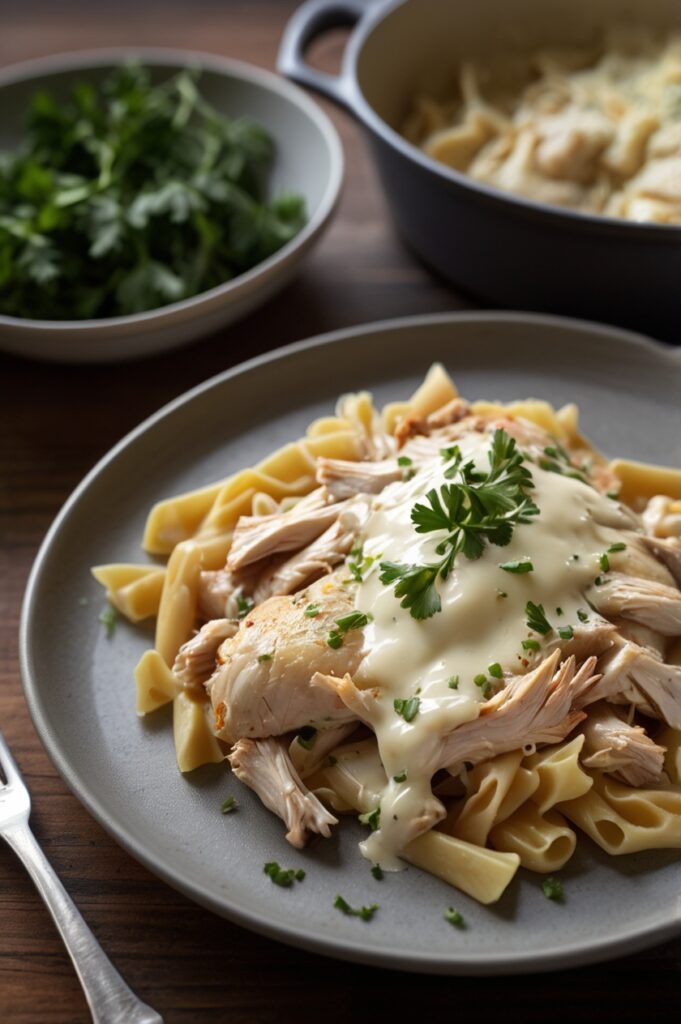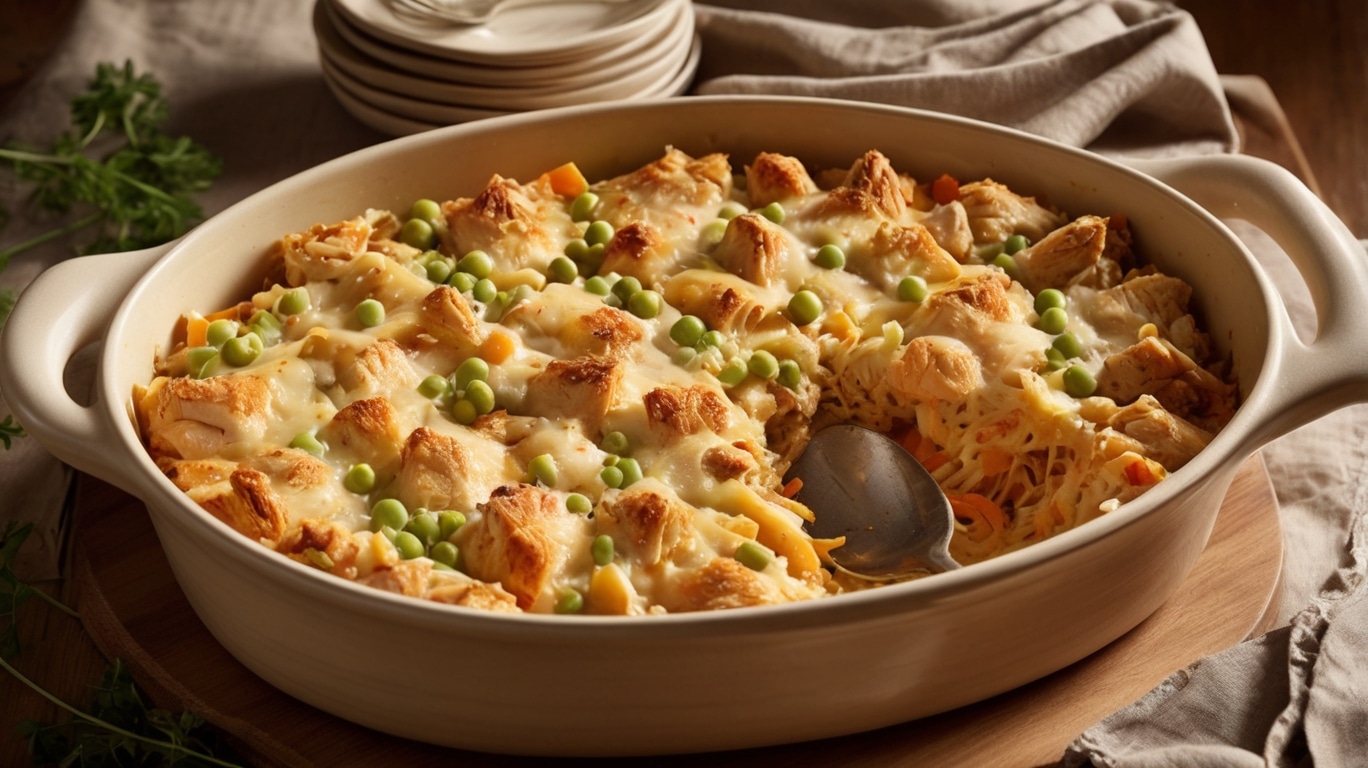Chicken casserole recipes bring me straight back to my grandmother’s old turquoise kitchen. She’d slide that bubbling dish out of the oven, steam curling around her face like magic, and say, “Don’t burn your tongue, it’s lava.” I did. Every single time. And it was always worth it. There’s just something grounding—almost nostalgic—about a good chicken casserole. It’s not just food. It’s comfort tucked inside a creamy, golden crust.
Chicken casserole recipes might seem simple. But underneath the surface? Layers of technique, texture, and timing that can make or break the dish. This isn’t just about throwing meat and veggies in a dish and baking it ’til it’s hot. We’re talking deliberate decisions. The right sear. The correct layering. A balance of fat, acid, and starch that sings instead of shouts.
Chicken casserole recipes are special because they offer insane versatility. You can go full southern with biscuits on top. Toss in Middle Eastern spices. Or lean French with wine, leeks, and mushrooms. They can feed a crowd, freeze beautifully, and be both luxurious and humble all at once. But only—only—if you know what you’re doin’.
Ingredients & Substitutions
Chicken casserole recipes start with one unavoidable star: chicken. But not all chicken’s made equal. I prefer bone-in thighs, skin removed, for their flavor and fat. Boneless breasts? Sure, they’re lean, but they’ll dry out if you look at ’em wrong.
Veggies matter. Onions (yellow, not white), carrots, and celery are non-negotiable for the base. Garlic—fresh, never jarred. Mushrooms, if you’re feelin’ earthy. Or throw in spinach, zucchini, or even corn if it’s summer and your fridge looks like a farmers market exploded.
You’ll want a sauce. Classic béchamel if you’re old-school. Or go cheat-mode with canned cream of mushroom (no shame). Add sour cream or Greek yogurt for tang. Want dairy-free? Use coconut milk, but keep in mind—it’ll taste coconutty. Which ain’t bad, just different.
Casseroles need a binder. Cooked rice, egg noodles, or potatoes work fine. Gluten-free? Use brown rice or quinoa, but cook ’em till they’re fluffy—not soggy mush. And for topping? Shredded cheddar, parmesan, or crushed crackers. I once used crumbled potato chips in a pinch. Wild? Maybe. Delicious? Hell yes.

Step-by-Step Instructions
Chicken casserole recipes begin with browning your chicken. Don’t skip this. Searing builds flavor. You want a golden crust, not gray mystery meat. Salt the chicken first—generously. Pepper, paprika, garlic powder too. Get oil hot. Don’t crowd the pan.
Sauté your onions, garlic, carrots, and celery in the leftover chicken fat. Deglaze with white wine or broth. Scrape all that fond from the bottom. That’s flavor gold. Add mushrooms here if you’re using ‘em. Cook till they’re deep brown—not floppy and sad.
Make the sauce. In a separate pan, melt butter. Whisk in flour. Let it cook 2–3 minutes ‘til it smells like toasted nuts. Slowly add milk or broth. Keep whisking. No one likes lumps unless it’s biscuit topping. Once thick, stir in your sour cream or cheese.
Assembly time. Grease your dish. Layer your starch (rice/noodles), veggies, chicken, then sauce. Mix gently or leave layered—depends on if you want clean layers or creamy chaos. Top with cheese, breadcrumbs, or whatever crunchy magic you’ve got.
Bake at 375°F (190°C) for 25–35 minutes. Top should be golden and bubbling around the edges. Rest it 10 minutes before serving. I know it smells like heaven. But patience keeps tongues safe.
Common mistakes? Using raw chicken (please don’t), too much liquid (soggy town), or under-seasoning (blandville). Fix them by tasting everything before it hits the oven. Yes, even the raw sauce.
Cooking Techniques & Science
Chicken casserole recipes lean heavy on layering techniques. Searing locks in moisture and adds the Maillard reaction’s nutty, roasted flavor. Skip this, and your casserole will taste flat—like chicken soup lost its soul.
The sauce? That roux-thickened magic? It’s science in action. Fat coats the flour, preventing lumps. Then, as liquid heats, starches gelatinize and thicken. Boom—velvety sauce. Want it silkier? Use heavy cream. Want it leaner? Try chicken stock with a cornstarch slurry.
Timing is critical. Overcooked veggies go mushy. Undercooked rice stays crunchy in a bad way. Precook your starches. Always. Casseroles are finishers, not full cookers. The oven melds flavors, browns the top, and reheats—not cooks from scratch.
Use a deep ceramic or enameled dish. It retains heat better and gives even browning. Metal pans can scorch the sides. Glass works but takes longer to heat. And always cover with foil for the first half of baking if you don’t want the top to dry out too fast.

Serving & Pairing Suggestions
Chicken casserole recipes shine brightest when served hot with something bright to cut the richness. Think a crisp green salad with lemon vinaigrette. Or roasted Brussels sprouts. Anything with bite or bitterness.
Wanna go cozy? Pair with buttermilk biscuits or buttered rolls. Something to mop up sauce. For drinks, a buttery Chardonnay works magic. Or a light red—like Pinot Noir—if your casserole leans herby or earthy.
Presentation? Use a big serving spoon. Let the cheesy edges drag along as you scoop. Sprinkle fresh herbs on top—chives, parsley, or thyme. A drizzle of olive oil never hurt either. It’s rustic. But that don’t mean it shouldn’t look pretty.
Conclusion
Chicken casserole recipes aren’t about shortcuts. They’re about rhythm. About layering love into every bite. You can taste when someone rushed it. And you definitely taste when someone gave a damn.
Chicken casserole recipes done right hit all the right notes—creamy, crunchy, savory, herby. They’re adaptable. Freeze well. Reheat even better. And somehow feel like a warm hug in a dish.
Final tips? Don’t skimp on salt. Always let it rest. And keep a stash of frozen casseroles in your freezer. Because sometimes life calls for comfort food right now, not 90 minutes from now.
What chicken is best for a casserole?
Use bone-in thighs for flavor and tenderness. Boneless breasts dry out easily. Shred rotisserie chicken for a quick option.
Can I freeze chicken casserole?
Yep. Let it cool completely. Wrap tightly with foil. Freeze up to 3 months. Reheat at 350°F covered in foil for 45 minutes or ‘til hot.
What’s the best way to reheat it?
Cover with foil to keep moisture in. Reheat at 350°F for 20–30 minutes. Add a splash of broth or cream if it looks dry.
Why is my casserole watery?
Too much liquid or uncooked veggies/starches. Always precook components and let the dish rest before cutting.
Can I make it dairy-free or gluten-free?
Sure can. Use coconut milk or oat cream, and a cornstarch slurry for the sauce. Gluten-free pasta or rice works great too.

Olivia P. is a seasoned food blogger at Tastywink, sharing delicious, easy-to-follow recipes inspired by him passion for home cooking. With years of culinary blogging experience, he brings flavor, creativity, and a personal touch to every dish.
